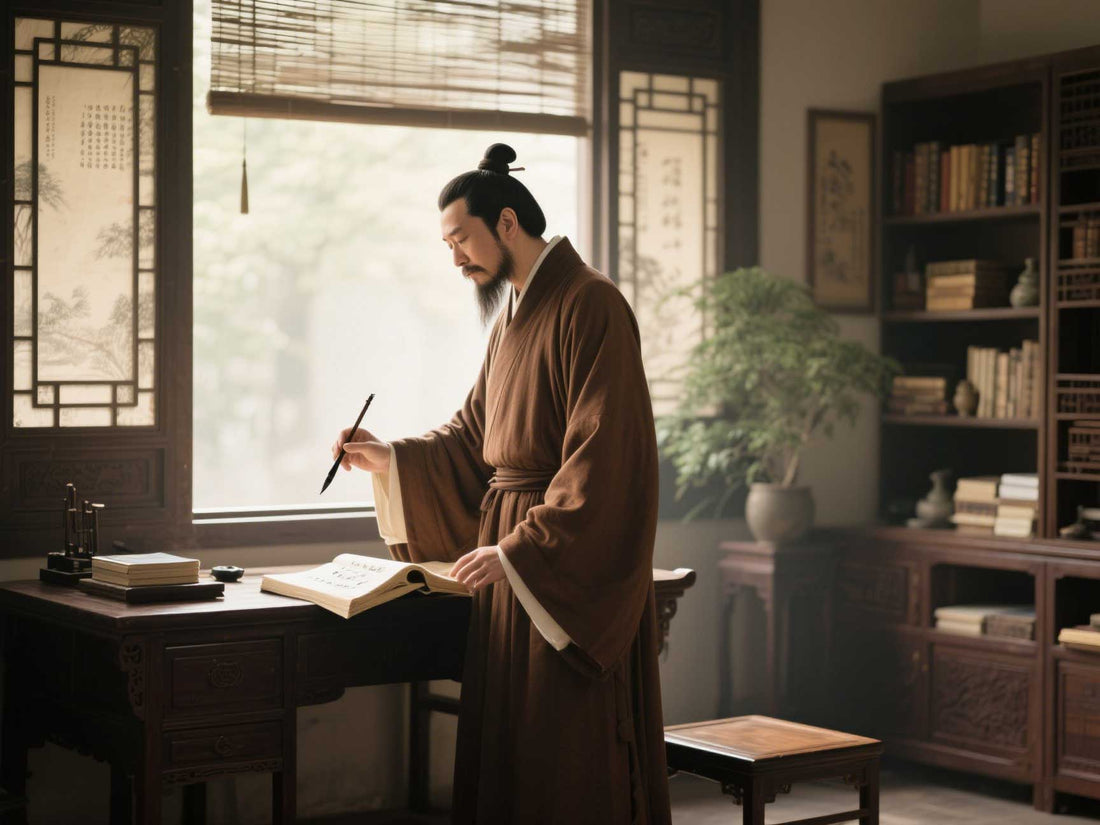
Calligraphers who have had a profound influence on calligraphy in history and modern times
Share
1. Historical period: the foundation of calligraphy and the establishment of models
-
Li Si (Qin Dynasty)
- He implemented the "one script for all", organized small seal script into the official font, formulated unified standards for Chinese characters, and the "Taishan Inscription" became a model of seal script. He was hailed as the "chief architect of the Chinese writing project."
-
Cheng Miao (Qin and Han Dynasty)
- He created the official script, promoted the "official script change", ended the ancient writing system, laid the foundation for regular script and running script, and achieved the key turning point from pictographic to symbolic Chinese characters.
-
Shi You (Western Han Dynasty)
- He created Zhangcao and was the first to systematize cursive script, providing the source for the development of Jincao and Kuaicao in later generations. Jijiu Zhang is regarded as an early model of cursive script.
-
Zhang Zhi (Eastern Han Dynasty)
- He innovated cursive script, transitioning from regular cursive script to "one-stroke writing" modern cursive script, with strokes as continuous as flowing clouds and running water, and was revered as the "Cursive Saint".
-
Wang Xizhi (Eastern Jin Dynasty)
- He integrated the official, regular and cursive scripts to create the Lanting Preface, which established the aesthetic model of running script. His style of "harmony, elegance and uprightness" has influenced the calligraphy of later literati for more than a thousand years.
-
Yan Zhenqing (Tang Dynasty)
- His regular script broke through the rules of Ouyang Xun and Yu Shi, and created the "Yan style" with its majestic spirit; his running script "Sacrificial Essay for My Nephew" incorporated emotion into the brushwork, setting a peak in lyrical writing.
II. Modern times: inheritance and innovation
-
Shen Yinmo (20th century)
- He revived the tradition of calligraphy, integrated the styles of Ouyang Xun and Chu Suiliang, and promoted the return of calligraphy in the Republic of China to the elegant tastes of literati. His running-cursive works became a model for modern calligraphy education.
-
Sha Menghai (20th century)
- Combining the spirit of epigraphy with the fluency of calligraphy, the style of calligraphy is vigorous and majestic, seal carving and calligraphy nourish each other, creating a new path of "stele and calligraphy combined".
-
Shu Tong (20th century)
- He created the "Shu-style" regular script, which simplified the traditional structure while retaining the sense of rhythm, promoted the practicality of calligraphy, and became one of the references for the design of early simplified characters.
-
Wang Guowei and Liang Qichao (late Qing Dynasty and early Republic of China)
- Wang Guowei reconstructed the calligraphy aesthetic system through academic research, combined Western philosophy to explain the spirit of brush and ink, and Liang Qichao advocated the "compatibility of steles and calligraphy" to influence the aesthetic orientation of the calligraphy world.
3. Comparison of key impacts
| period | Representatives | Core Contribution | Impact Areas |
|---|---|---|---|
| Qin and Han Dynasties | Lees | Unification of Chinese Characters and Standardization of Small Seal Script | Basics of Chinese Character Structure |
| Wei and Jin Dynasties | Wang Xizhi | The establishment of the aesthetic system of literati calligraphy | A model of running script art |
| Tang Dynasty | Yan Zhenqing | Combination of regular script and emotional expression | Standardization of regular script |
| Modern | Sha Menghai | The fusion of inscriptions and calligraphy and the reappearance of the spirit of bronze and stone | Modern calligraphy is diverse |
This context not only shows the transformation of calligraphy from a practical tool to an artistic medium, but also reflects the dynamic balance of "tradition-innovation" in cultural change.
